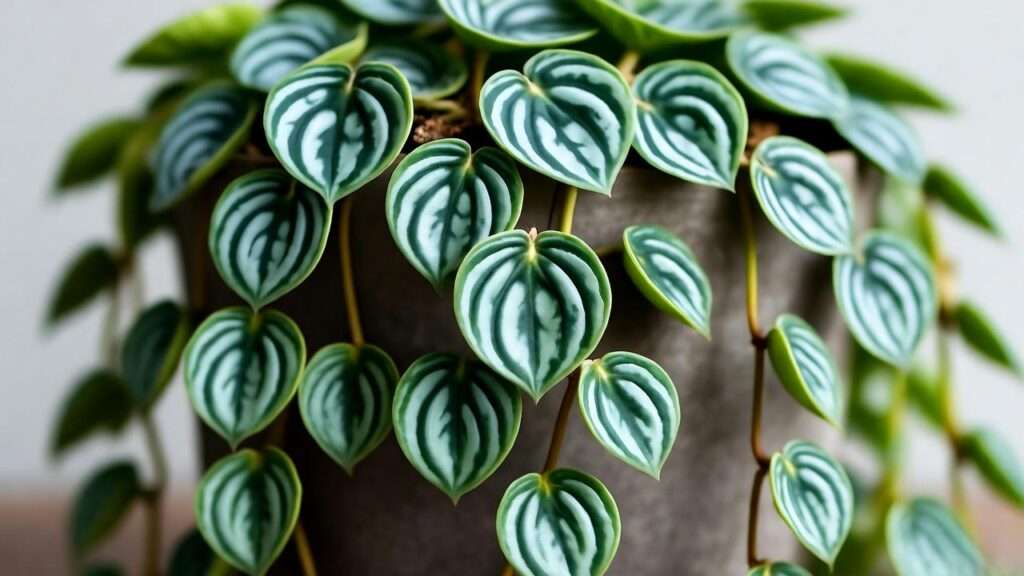Picture this: a cascade of tiny, heart-shaped leaves with intricate turtle-shell patterns trailing over the edge of a hanging basket, bringing a touch of whimsy to your home. That’s the magic of the String of Turtles plant (Peperomia prostrata), a charming houseplant that’s capturing the hearts of plant lovers everywhere! 🌱 Whether you’re a seasoned plant parent or a beginner looking to nurture your first trailing beauty, this low-maintenance gem is perfect for you. In this comprehensive guide, we’ll share expert-backed care tips to help you grow a lush, vibrant String of Turtles plant. From ideal lighting to propagation tricks, we’ve got everything you need to ensure your plant thrives. Let’s dive into the world of this delightful houseplant and transform your space with its unique charm! 😊
Our advice draws from horticultural expertise, including insights from botanists and trusted plant care resources, ensuring you receive accurate, reliable information to make your String of Turtles flourish.
What Is the String of Turtles Plant? 🌿
Botanical Background
The String of Turtles, scientifically known as Peperomia prostrata, is a petite, trailing plant native to the rainforests of South America. Belonging to the Piperaceae family, this houseplant is adored for its small, round leaves that resemble miniature turtle shells, complete with intricate, silvery-green patterns. Its vining growth habit makes it a favorite for hanging baskets, terrariums, or as a cascading accent on shelves. Unlike some fussy houseplants, String of Turtles is compact, rarely exceeding a few inches in height, with vines that can trail up to 12 inches or more when well-cared for.
Benefits of Growing String of Turtles
Why choose this plant? For starters, its unique aesthetic adds a playful yet elegant touch to any indoor space. Its low-maintenance nature makes it ideal for busy plant parents or those new to houseplant care. Plus, Peperomia prostrata is non-toxic to cats and dogs 🐾, making it a safe choice for pet-friendly homes. According to the American Society for the Prevention of Cruelty to Animals (ASPCA), this plant poses no harm to furry friends. Additionally, like many houseplants, String of Turtles contributes to air purification, improving indoor air quality by filtering out minor pollutants, as noted in NASA’s Clean Air Study.
Expert Insight: “The String of Turtles is a gem for collectors due to its compact size and striking leaf patterns,” says Dr. Emily Carter, a horticulturist with over 15 years of experience in tropical plant care. “Its adaptability to various indoor conditions makes it a top choice for both novice and experienced growers.”
Optimal Growing Conditions for String of Turtles 🌞
Creating the perfect environment is key to keeping your String of Turtles happy. Let’s break down the essentials: light, temperature, humidity, and soil.
Light Requirements
String of Turtles thrives in bright, indirect light, which enhances its vibrant leaf patterns. Place it near a north- or east-facing window where it can bask in filtered sunlight. Direct sunlight can scorch its delicate leaves, causing them to lose their characteristic markings. If your home has low light, don’t worry—this plant can tolerate shadier spots, though growth may slow, and leaf patterns may fade. Consider using a grow light (like a full-spectrum LED) for 10–12 hours daily to mimic ideal conditions.
Example: Position your plant 2–3 feet from a window with a sheer curtain to diffuse light, or use a grow light set to medium intensity for consistent results.
Temperature and Humidity
This tropical beauty prefers temperatures between 65–75°F (18–24°C), making it well-suited for most indoor environments. Avoid placing it near cold drafts, air conditioning vents, or heating sources, as sudden temperature swings can stress the plant. String of Turtles loves moderate humidity (40–50%), typical of most homes. To boost humidity, especially in dry climates or during winter, try misting the leaves weekly, placing a pebble tray with water beneath the pot, or using a small humidifier 💧.
Pro Tip: If you notice crispy leaf edges, it’s a sign humidity is too low. A quick fix is grouping your String of Turtles with other plants to create a humid microclimate.
Soil Preferences
A well-draining soil mix is crucial for preventing root rot, a common issue with Peperomia species. Opt for a peat-based potting mix blended with perlite or coarse sand for optimal aeration and drainage. A store-bought mix labeled for succulents or cacti works well, or you can make your own by combining:
- 50% peat moss or coco coir
- 30% perlite
- 20% coarse sand or orchid bark
DIY Soil Recipe: Mix 2 parts peat-based potting soil with 1 part perlite and 1 part sand. Ensure the pot has drainage holes to prevent waterlogged roots.
Tip Box:
- ✅ Place in bright, indirect light (avoid direct sun).
- ✅ Keep temperatures between 65–75°F.
- ✅ Use well-draining soil to prevent soggy roots.
- ✅ Boost humidity with a pebble tray or humidifier.
How to Care for Your String of Turtles Plant 🌱
Proper care ensures your String of Turtles stays lush and healthy. Let’s cover watering, fertilizing, and maintenance.
Watering Guidelines
Watering is where many plant parents go wrong. String of Turtles prefers a “soak and dry” approach: water thoroughly, then let the top inch of soil dry out before watering again. In spring and summer, this typically means watering every 7–10 days, while in fall and winter, you may water every 2–3 weeks, depending on your home’s conditions. Overwatering can lead to yellowing leaves or mushy stems, while underwatering causes wilting or shriveled leaves.
Best Practice: Use room-temperature water and ensure excess water drains out. Always check the soil with your finger or a moisture meter before watering.
Fertilizing for Healthy Growth
During the growing season (spring and summer), feed your String of Turtles once a month with a diluted liquid fertilizer, such as a balanced 10-10-10 or 20-20-20 formula. Dilute to half-strength to avoid fertilizer burn. In fall and winter, when growth slows, skip fertilizing altogether. Over-fertilizing can cause leaf discoloration or stunted growth, so less is more with this plant.
Recommended Product: Try a liquid houseplant fertilizer like Miracle-Gro Indoor Plant Food, diluted to 50% strength.
Pruning and Maintenance
To keep your String of Turtles looking full and tidy, prune leggy vines with clean, sharp scissors ✂️. Trim just above a leaf node to encourage bushier growth. Regularly wipe leaves with a damp cloth to remove dust and maintain their vibrant patterns. Repot every 1–2 years or when the plant becomes root-bound, using a slightly larger pot with fresh soil.
Expert Insight: “Pruning not only shapes the plant but also stimulates new growth,” says Maria Lopez, a plant care specialist with a decade of experience. “For String of Turtles, a light trim every few months can make a big difference.”
Propagating String of Turtles: Grow More Plants! 🌿
Want to multiply your String of Turtles collection or share with friends? Propagation is simple and rewarding.
Propagation Methods
The easiest way to propagate String of Turtles is through stem cuttings. Here’s how:
- Select a Healthy Stem: Choose a 3–4-inch vine with at least 2–3 leaves.
- Cut and Prep: Snip below a node (where leaves attach) using sterilized scissors.
- Root in Water or Soil:
- Water: Place the cutting in a jar of water, ensuring nodes are submerged. Change water every few days. Roots should appear in 2–4 weeks.
- Soil: Plant the cutting in moist, well-draining soil and cover with a plastic bag to retain humidity.
- Transplant: Once roots are 1–2 inches long, pot in a small container with standard soil mix.
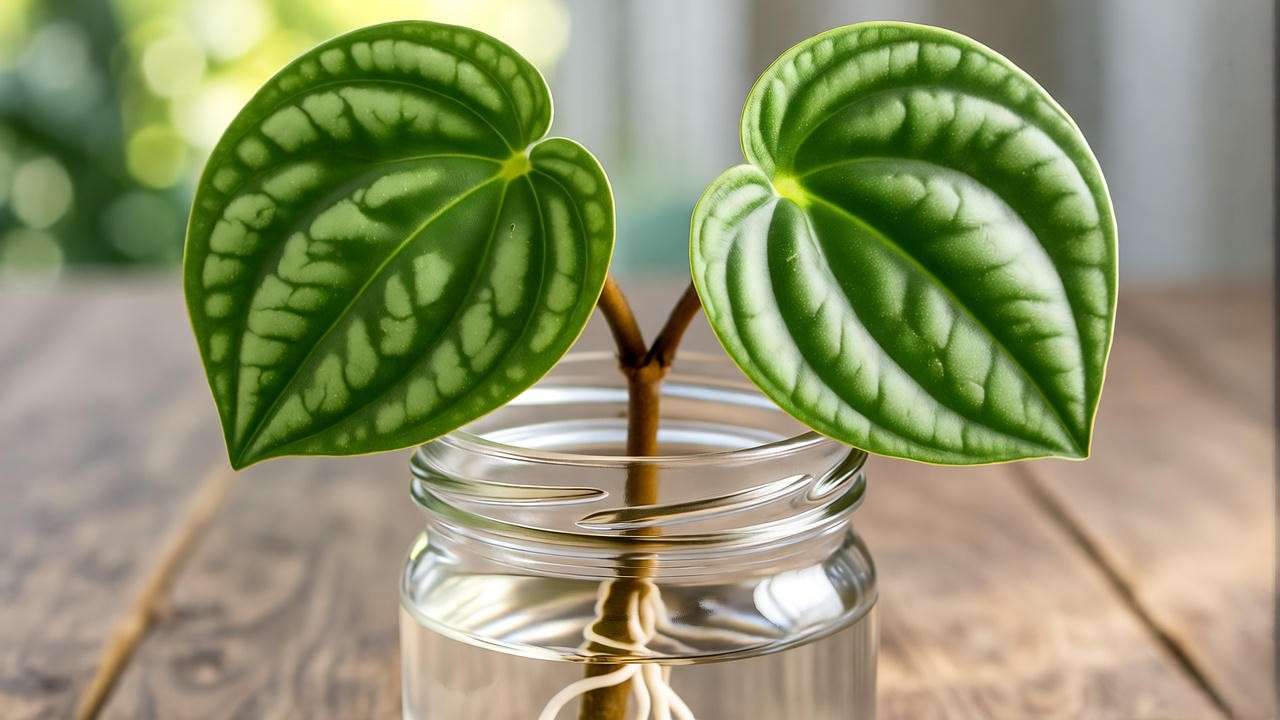
Leaf propagation is less reliable for Peperomia prostrata, as leaves often fail to develop roots. Stick to stem cuttings for best results. Spring or early summer is the ideal time to propagate, as the plant is actively growing.
Tips for Success
- Use clean, sharp tools to prevent disease transmission.
- Maintain high humidity (60% or more) during rooting by using a mini greenhouse or plastic bag.
- Place cuttings in bright, indirect light to encourage root development.
Example: Create a mini greenhouse by placing a clear plastic bag over a potted cutting, securing it with a rubber band. Open daily for air circulation.
Case Study: Sarah, a plant enthusiast from California, propagated her String of Turtles from a single 4-inch cutting. Within 6 weeks, she had a rooted plant ready for potting, which she gifted to a friend. “It was so easy and rewarding!” she shared on a plant care forum.
Common Problems and Solutions 🐞
Even with the best care, your String of Turtles may face challenges. Here’s how to identify and fix common issues to keep your plant thriving.
Pests and Diseases
While String of Turtles is relatively pest-resistant, it can occasionally attract spider mites, mealybugs, or fungus gnats. Spider mites, tiny sap-sucking pests, leave fine webbing and stippled leaves. Mealybugs appear as white, cottony masses on stems or leaf undersides. Fungus gnats thrive in overly wet soil, buzzing around the plant.
Organic Pest Control:
- Neem Oil: Mix 1 tsp neem oil with 1 quart of water and a drop of dish soap. Spray affected areas every 7–10 days.
- Insecticidal Soap: Apply a ready-to-use solution to pests, ensuring thorough coverage of leaf undersides.
- Fungus Gnats: Let soil dry out between waterings and use sticky traps to capture adults.
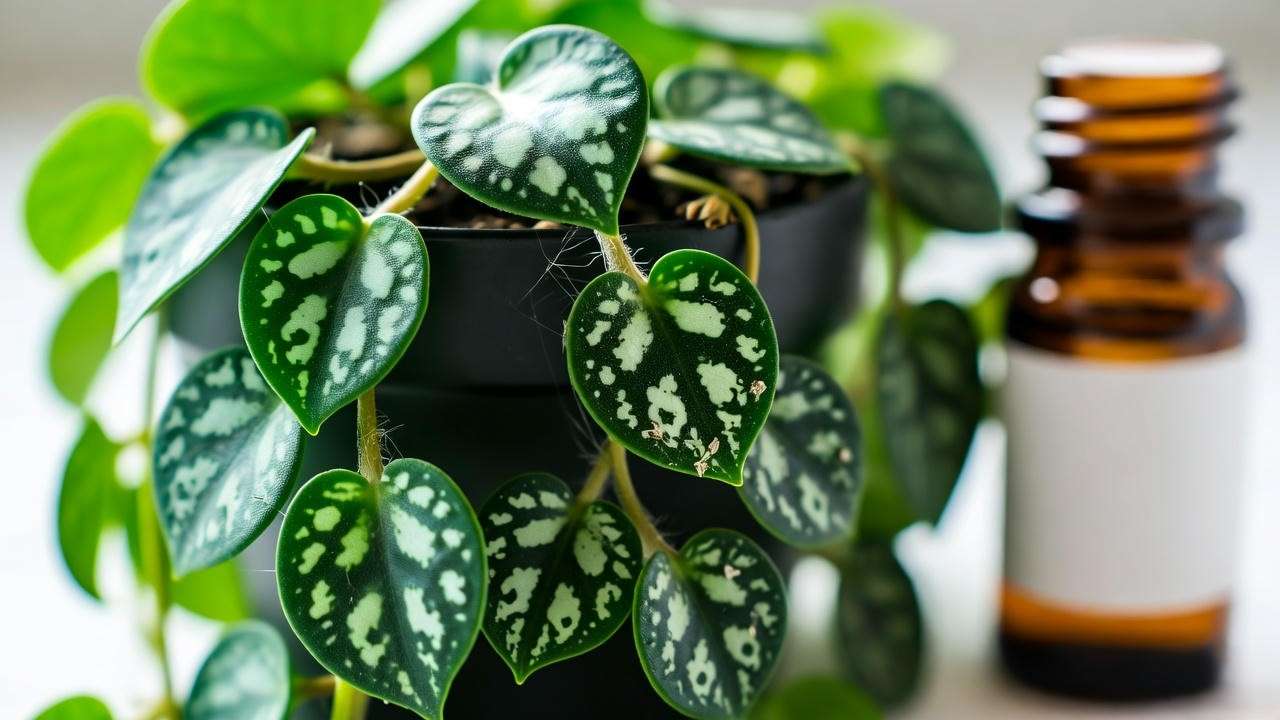
To prevent root rot and fungal issues, ensure proper drainage and avoid overwatering. If you notice mushy stems or blackened roots, trim affected areas and repot in fresh, well-draining soil.
Pro Tip: Inspect your plant weekly during routine care to catch pests early. A magnifying glass can help spot tiny critters like spider mites.
Troubleshooting Leaf Issues
Leaf problems often signal environmental stress. Here’s a quick guide to diagnose and fix common issues:
- Dropping Leaves: Usually caused by overwatering or low humidity. Check soil moisture and increase humidity with a pebble tray or humidifier 💧.
- Fading Leaf Patterns: Insufficient light is the culprit. Move the plant to a brighter spot with indirect light or supplement with a grow light.
- Curling or Shriveled Leaves: Indicates underwatering or temperature stress. Water consistently and keep the plant away from cold drafts or hot radiators.
Tip Box:
| Issue | Cause | Solution |
|---|---|---|
| Dropping leaves | Overwatering/low humidity | Reduce watering, boost humidity |
| Fading patterns | Low light | Move to brighter indirect light |
| Curling leaves | Underwatering/temperature stress | Water thoroughly, stabilize temperature |
Creative Display Ideas for String of Turtles 🪴
The String of Turtles is a versatile plant that shines in creative displays. Its trailing vines make it perfect for elevating your home’s aesthetic.
Hanging Baskets and Wall Planters
Showcase the plant’s cascading beauty in a hanging basket or wall-mounted planter. Choose a lightweight pot (6–8 inches in diameter) to prevent strain on the vines. Terracotta pots are ideal for their breathability, though ceramic works well for a polished look. Hang near a window or in a corner with bright, indirect light to let the vines trail freely, creating a living curtain effect.
Styling Tip: Pair with a minimalist white or woven basket for a modern vibe, or use a colorful pot to add a pop of personality.
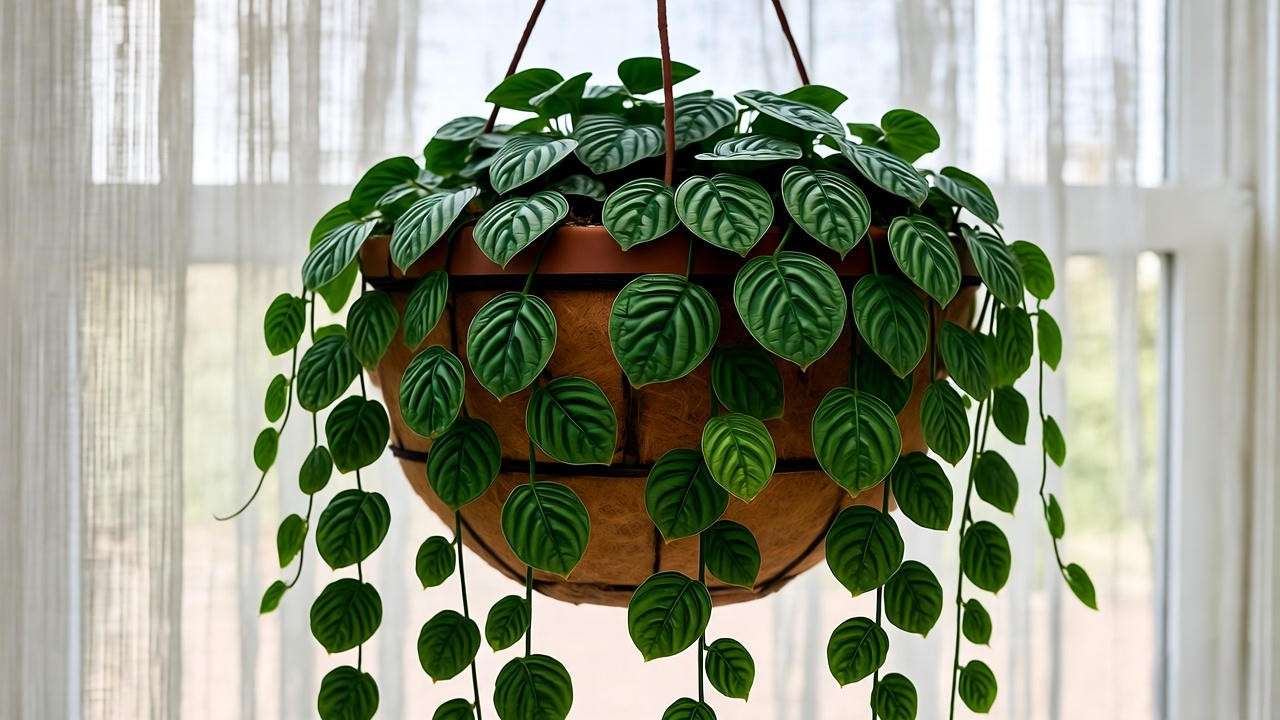
Terrariums and Mixed Planters
String of Turtles thrives in terrariums, where its small size and humidity-loving nature shine. Combine with other low-maintenance plants like pothos, ferns, or fittonia for a lush mini jungle. Use a glass container with a lid to maintain humidity, but ensure occasional ventilation to prevent mold. In mixed planters, place String of Turtles at the edge to let its vines spill over, complementing upright plants like snake plants or ZZ plants.
Example: Create a terrarium with a layer of moss, small pebbles, and a String of Turtles cutting for a low-maintenance, eye-catching display.
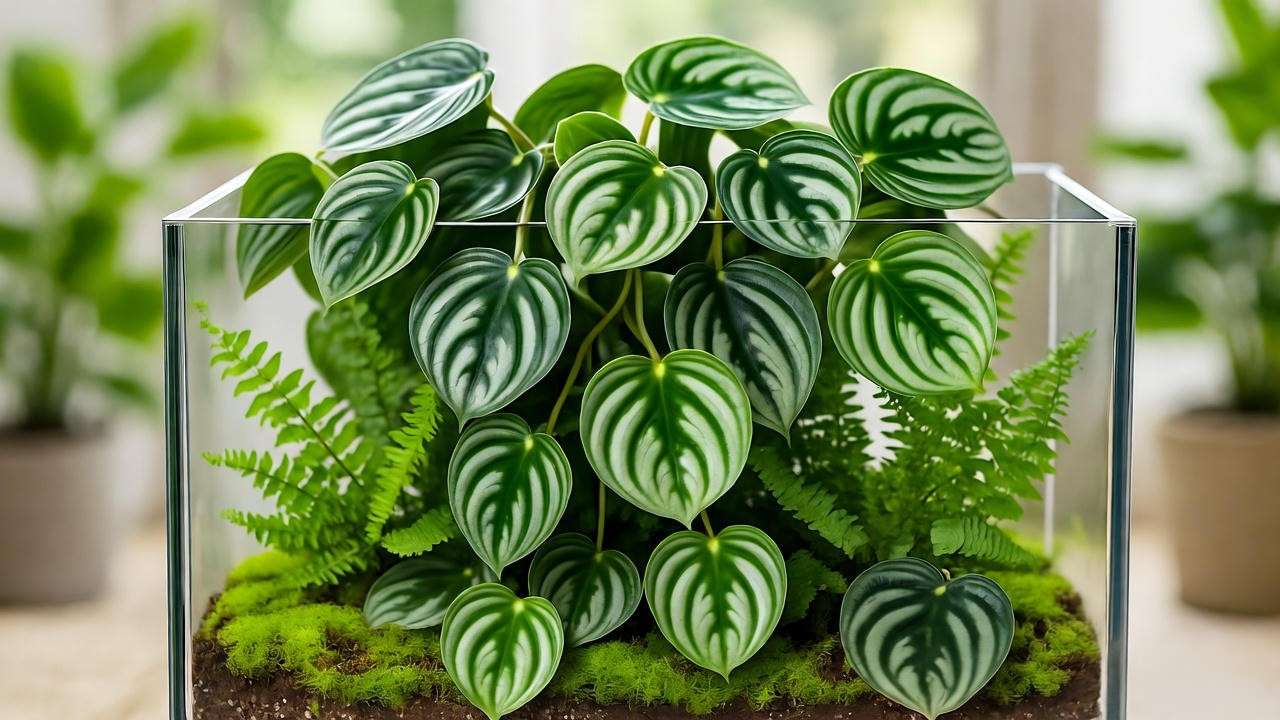
DIY Projects
Get crafty with these fun ideas:
- Macramé Hanger: Craft a simple macramé plant hanger using cotton cord. Follow these steps:
- Cut eight 6-foot cords and knot them together at one end.
- Divide into four pairs and knot each pair 12 inches down.
- Combine adjacent cords to form a net-like structure, knotting every 3 inches.
- Secure the pot in the center and hang from a ceiling hook.
- Shelf Cascade: Place your String of Turtles on a high shelf, letting vines drape over the edge for a waterfall effect.
Visual Inspiration: Imagine a cozy living room corner with a macramé-hung String of Turtles trailing over a wooden shelf, paired with a few candles and a stack of books. The plant’s delicate vines add warmth and charm to the space.
FAQs About String of Turtles Care ❓
Based on common search queries and plant care forums, here are answers to frequently asked questions:
- How often should I water my String of Turtles?
Water every 7–10 days in spring/summer, allowing the top inch of soil to dry out. In fall/winter, water every 2–3 weeks, depending on soil dryness. - Can String of Turtles survive in low light?
Yes, but growth may slow, and leaf patterns may fade. For best results, provide bright, indirect light or supplement with a grow light. - Why are my plant’s leaves losing their pattern?
Fading patterns indicate insufficient light. Move to a brighter spot or use a full-spectrum grow light for 10–12 hours daily. - Is String of Turtles safe for pets?
Yes, Peperomia prostrata is non-toxic to cats and dogs, per the ASPCA, making it a great choice for pet-friendly homes 🐾. - How do I make my String of Turtles grow faster?
Ensure bright, indirect light, moderate humidity, and monthly fertilization during the growing season. Prune regularly to encourage bushier growth.
Expert Tips for Long-Term Success 🌟
To keep your String of Turtles thriving for years, consider these expert tips:
- Seasonal Adjustments: In winter, reduce watering and skip fertilizing, as the plant enters dormancy. Resume regular care in spring.
- Encourage Bushier Growth: Pinch back leggy vines every few months to promote fuller growth. Use trimmed cuttings for propagation.
- Monitor Plant Health: A healthy String of Turtles has plump, glossy leaves with vibrant patterns. If leaves look dull or droopy, reassess light, water, or humidity.
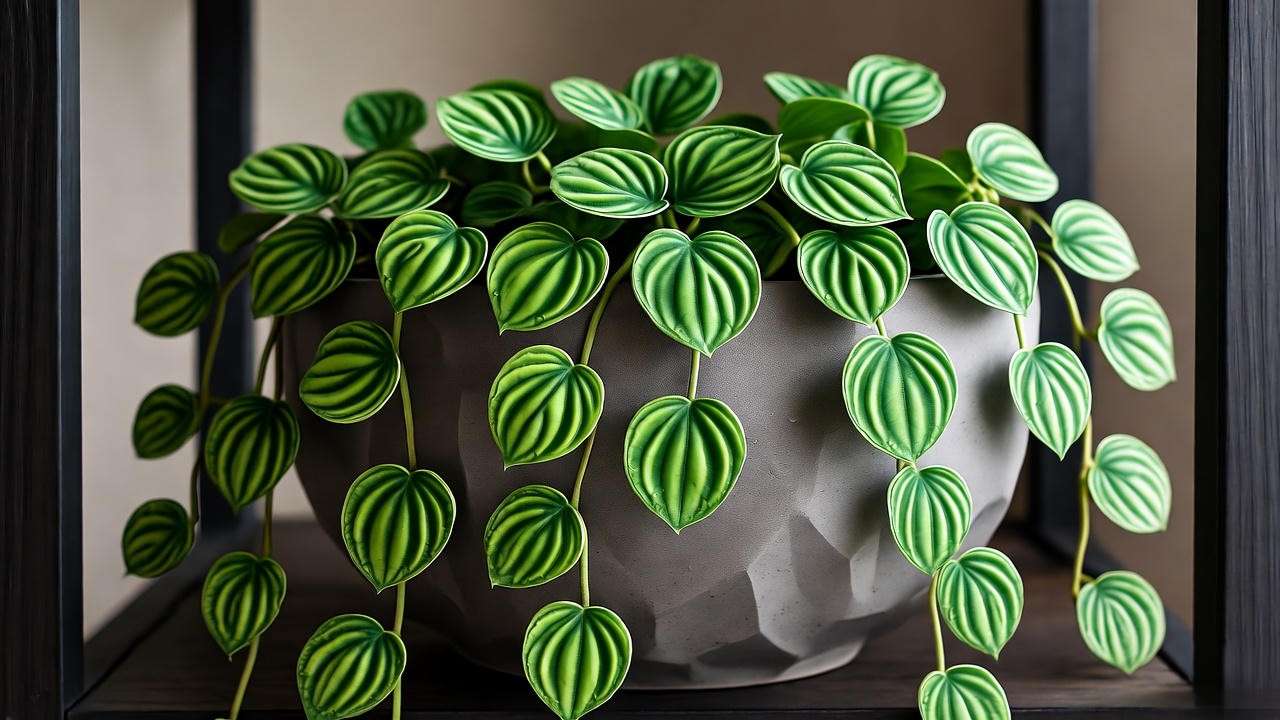
Expert Quote: “Peperomia prostrata is remarkably resilient, adapting to a range of indoor conditions with minimal fuss,” says Dr. James Patel, a botanist specializing in tropical houseplants. “With consistent care, it rewards growers with stunning, long-lasting foliage.”
Conclusion
Growing a lush String of Turtles plant is a rewarding journey that brings beauty and charm to your home. By providing bright, indirect light, well-draining soil, and moderate humidity, you’ll create the perfect environment for this adorable houseplant. Regular watering, occasional fertilizing, and light pruning will keep it vibrant, while propagation lets you share the love with others. Whether displayed in a hanging basket, terrarium, or DIY macramé hanger, your String of Turtles will steal the show with its turtle-shell-patterned leaves 🌿.
Ready to start your String of Turtles adventure? Share your progress in the comments below, or explore our related articles on houseplant care for more inspiration. For a handy reference, download our free String of Turtles care checklist to keep your plant thriving! Join our community of plant lovers and show off your lush vines with the hashtag #TurtlePlantLove. Happy growing! 😊

